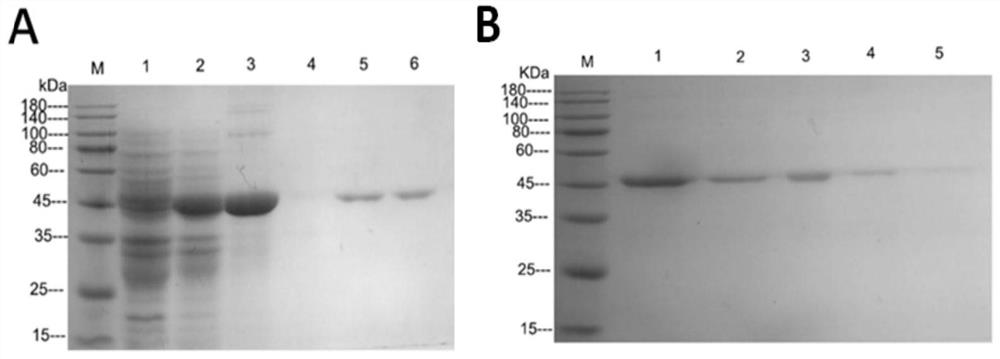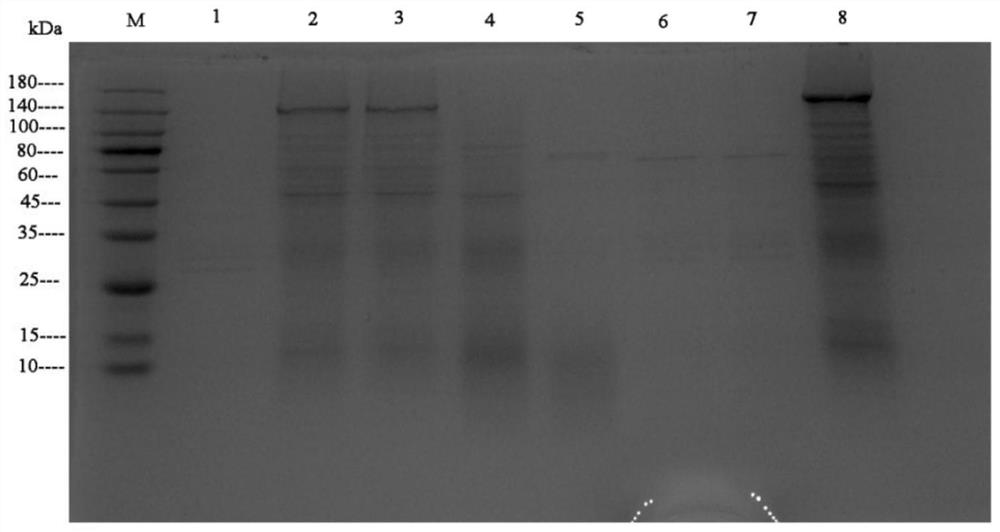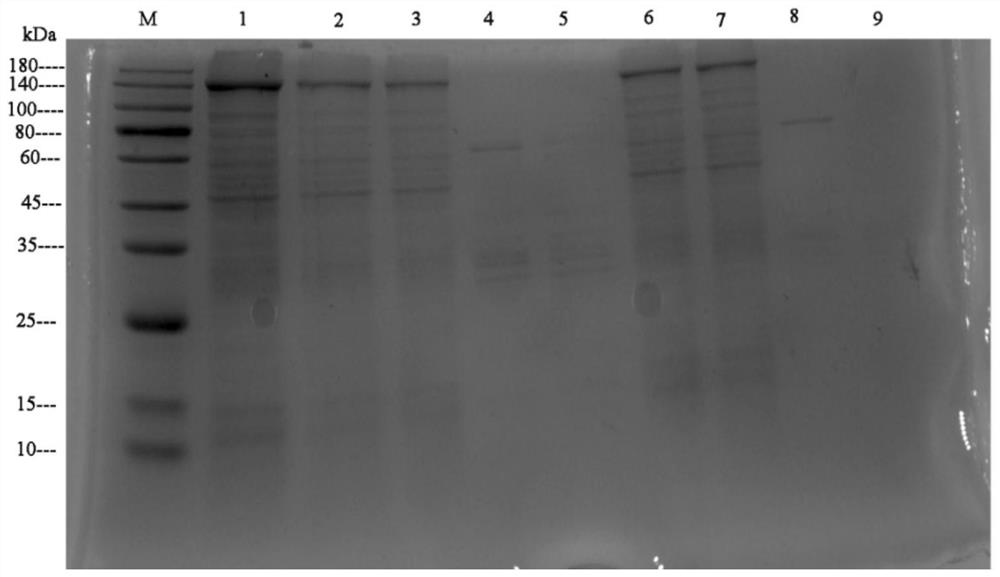Plutella xylostella trypsin-9 gene and application thereof
A technology of trypsin and diamondback moth, which is applied in the field of agricultural biology to achieve the effects of increased mortality, good biological control potential and application prospects
- Summary
- Abstract
- Description
- Claims
- Application Information
AI Technical Summary
Problems solved by technology
Method used
Image
Examples
Embodiment 1
[0036] Cloning of the CDS Fragment of Example 1 Plutella xylostella Trypsin-9 Gene
[0037] The total RNA of the midgut of Plutella xylostella was extracted by the Trizol method, and one strand of cDNA was synthesized by reverse transcription, and PCR was cloned using this as a template. The primer sequence of the target gene including the entire CDS region was F: 5'-AGCATAATTCAAATTCAGTTACC-3' , R: 5'-AACATTTCTCCTACGCGTTTGTG-3'; The PCR product was separated by 1% agarose gel electrophoresis, recovered and purified, and its sequence size was 820bp after analysis. The recovered PCR product was ligated into the pMD18-T vector, and the ligated product was transformed into a competent cell DH5α, and the positive cloned strain was sent for sequencing identification. The correct strains identified by sequencing were stored at -80°C as glycerol bacteria.
Embodiment 2
[0038] Example 2 Prokaryotic expression and recombinant protein purification of diamondback moth Trypsin-9 gene
[0039] The cDNA obtained above was used as a template for PCR cloning, and a pair of specific amplification primers were designed according to the ORF sequence of the Plutella xylostella Trypsin-9 gene, and the enzyme cutting sites EcoRI (GAATTC) and HindIII (AAGCTT) were introduced into the Trypsin-9 gene. Primer sequence is F: 5'-CG GAATTC AGGATTGTGGGTGGATCCGC-3' (the underline indicates the designed EcoRI restriction site); R: 5'-CC AAGCTT CGCGTTTGTGCGAATCCAGT-3' (the underline indicates the designed HindIII restriction site). Using the recombinant plasmid carrying the Trypsin-9 CDS fragment as a template, PCR amplification was carried out to obtain the Trypsin-9 gene expression fragment. The PCR product was separated by 1% agarose gel electrophoresis and recovered and purified. The recovered PCR product and the pET-32a empty vector were subjected to double ...
Embodiment 3
[0041] Example 3 Different concentrations of Plutella xylostella midgut enzyme solution degrades Cry1Ac protoxin
[0042] 1. Extraction of Cry1Ac protoxin
[0043] In this experiment, Bt HD-73 strain was used as the material to extract the protoxin protein of Cry1Ac. The specific steps are as follows:
[0044] (1) Pick a single colony from the HD-73 strain colony plate and activate it overnight on LB liquid medium (30°C, 200rpm).
[0045] (2) Transfer to 1 / 2LB liquid medium (yeast powder in LB medium is halved) at a ratio of 1:100 (30°C, 200rpm, 36h) for shaking culture to obtain a crystal vegetative mixture.
[0046] (3) Wash twice with PBS, lyse with lysate, and centrifuge at 3000 rpm for 30 min at 4°C.
[0047] (4) Precipitate the supernatant with NaNc-HAc isoelectric point, then centrifuge (4°C, 3000rpm, 30min)
[0048] (5) The obtained precipitate is crystal protein, which is dissolved in the solution. The concentration of the extracted protoxin was determined by aliq...
PUM
 Login to View More
Login to View More Abstract
Description
Claims
Application Information
 Login to View More
Login to View More - R&D
- Intellectual Property
- Life Sciences
- Materials
- Tech Scout
- Unparalleled Data Quality
- Higher Quality Content
- 60% Fewer Hallucinations
Browse by: Latest US Patents, China's latest patents, Technical Efficacy Thesaurus, Application Domain, Technology Topic, Popular Technical Reports.
© 2025 PatSnap. All rights reserved.Legal|Privacy policy|Modern Slavery Act Transparency Statement|Sitemap|About US| Contact US: help@patsnap.com



